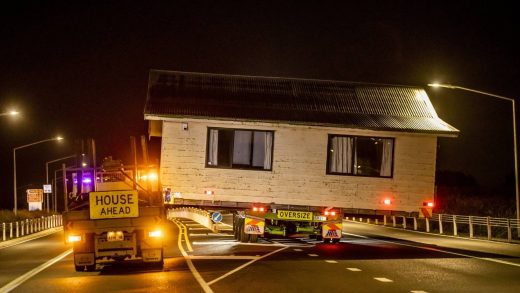
We were warned something like this was going to happen.
This week, the Manitoba Clinic — one of the largest private medical facilities in Canada and home to more than 70 physicians — filed for bankruptcy protection.
In court filings, the clinic said it was never able to recruit enough physicians to fill a brand-new facility on Sherbrook Street, opened in 2018 on the edge of the Health Sciences Centre campus.
Like most private clinics, the Manitoba Clinic’s only real source of revenue is a share of the fees its physicians bill to the province. Without a fully functioning medical practice of some description filling each of its offices, the clinic is not viable. Since it opened in 2018, it has more than $8 million in accumulated losses.

But there is more to the Manitoba Clinic story than court documents show.
As has been the case with other privately owned facilities that provide primary care to Manitobans, the Manitoba Clinic suffered enormously from pandemic conditions. When COVID-19 was at its most severe, fewer patients were seeking appointments with physicians. Annual checkups were put off, minor procedures delayed. And with each cancelled or postponed appointment, there was less revenue for each physician in the clinic.
As the clinic attempted to ramp up again in the last year, it had to contend with escalating overhead costs, inflationary pressures on equipment and materials and a shortage of support staff.
Complicating matters, sources said the Manitoba Clinic had expected to earn a steady stream of money from an attached parking structure that, in part, was designed to handle an expected surge in demand when the neighbouring CancerCare Manitoba opened a new and expanded headquarters on McDermot Avenue. However, former premier Brian Pallister cancelled that project in 2017.
Put all the factors together — too-few physicians, a precipitous drop in patient visits, increased overhead costs, cancelled nearby projects — and you get a perfect storm threatening to drag the Manitoba Clinic down.
In case you were wondering, the Progressive Conservative government was warned something like this was going to happen. Doctors Manitoba, in particular, frequently reminded the Tories that privately owned primary-care facilities were struggling to make ends meet during the pandemic and that special support programs were needed.
Pallister largely ignored those warnings and made very little effort to do anything special for clinics. While Pallister applauded himself for pumping hundreds of millions of dollars into subsidies for failing businesses, Doctors Manitoba found that most private clinics did not qualify. When doctors asked the government to underwrite the cost of PPE — as every other province has done — Pallister refused.
When doctors asked that the range of services that could be provided virtually through video conferencing or telephone calls be expanded, the province said no.
When private clinics volunteered to stay open late to perform COVID-19 testing, the province limited their involvement to only two sites.
Why should government care about privately owned clinics?
Although we live in a country with a universal public health-care system, most of the primary care is provided through privately owned clinics occupied and operated by physicians. The cost of the clinic space, staff and equipment are covered by a portion of the fees physicians charge to the government for each visit or medical procedure.

It’s hardly a perfect system, but it has worked pretty well for a very long time.
But what happens if some of those facilities begin to fail and close? The collateral damage that would come from ignoring the plight of private clinics would be profound.
There is simply no way for government to create the space needed for physicians — both family doctors and specialists — to conduct their business. There isn’t enough room in hospitals and the government has no real interest in becoming landlords to doctors in private practice.
But if there are fewer clinics for physicians to occupy here in Manitoba, there is also much less reason for them to stay. And we’re already suffering under a severe shortage of doctors.
By one estimate, Manitoba would need to recruit more than 400 doctors just to achieve the average number, per capita, in Canada. The provincial government just launched a $200 million human-resource action plan to start addressing the physicians shortage but it is clearly doomed to fail if other conditions — such as the failure of private clinics — drive more of them away.
For the time being, the government is closely watching Manitoba Clinic. A spokeswoman for Health Minister Audrey Gordon said the minister is aware of the situation and department staff are looking for ways to shore up the clinic’s financial situation.
Although it’s good to have the minister’s eyes on this file, it’s probably not enough of an effort to address the larger issues at stake. If Manitoba were to descend into another significant pandemic situation, where people stop going to see their family doctors and surgeries and diagnostic procedures have to be cancelled — and there’s a chance of that happening this winter — then what will government do?
There should be an array of support programs readied in the event that clinics find themselves struggling. Sitting back and watching a problem grow into a crisis is simply not going to help this province solve its physician-shortage problem.

Dan Lett
Columnist
Born and raised in and around Toronto, Dan Lett came to Winnipeg in 1986, less than a year out of journalism school with a lifelong dream to be a newspaper reporter.
Read full biography


